Which is more important— things that take up space, or the spaces in between? Does our eye prefer patches of bright color, or the surrounding blankness that allows us to see the color? When we arrive at a long-anticipated event, are we so done with waiting, or do we sometimes wish to be back in that magical quiet land?
It must be Advent again, because these are the questions I have swirling around, while I’m actively not shopping. Looking back at my blogs from previous years, I see these two: “Getting Ready for Something, or Perhaps for Nothing” (2013) as well as “Waiting Time” (2011). I’ll try not to repeat myself here, while presenting a kind of an updated panorama on the topic, with way more art.
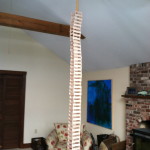 We don’t have a Christmas tree up yet, but as of last night, my husband and I are the proud owners of a soaring-to-the-ceiling wooden tower in our family room. Two visiting boys left us this wonderful present, right in front of the new wood stove and just a few feet away from the new television set. The ladder’s been put away now, but it was necessary for a time. This morning, I’m wondering why I didn’t think to ask them to build the thing maybe not right smack in the middle of the room. The tower that now stands, having made it through the night, already has a much longer life span than the ones that preceded it, because, naturally, the boys enjoyed inventing it over and over again. We now plan to send regular updates about how it’s surviving, assuring the builders that Rocky’s tail is doing no harm.
We don’t have a Christmas tree up yet, but as of last night, my husband and I are the proud owners of a soaring-to-the-ceiling wooden tower in our family room. Two visiting boys left us this wonderful present, right in front of the new wood stove and just a few feet away from the new television set. The ladder’s been put away now, but it was necessary for a time. This morning, I’m wondering why I didn’t think to ask them to build the thing maybe not right smack in the middle of the room. The tower that now stands, having made it through the night, already has a much longer life span than the ones that preceded it, because, naturally, the boys enjoyed inventing it over and over again. We now plan to send regular updates about how it’s surviving, assuring the builders that Rocky’s tail is doing no harm.
Besides the fact that I’m pleased as Christmas punch that an old box of “Keva planks” – hauled up here with the move – could provide so much delight, I’m struck by how the beauty of the end result might be captured in a poem like this:
Plank
No Plank
Plank
No Plank
Plank
All the way up
Seen this way, the “Not Plank” sections are just as important as the “Plank” ones.
This whole concept had been on my mind anyway after a visit to the Matisse Cut-Outs at the Museum of Modern Art in New York City last weekend. What a spectacularly simple idea, really— to make designs with a wide variety of shapes cut out of paper which had been painted in a rainbow of shades. The shapes were originally affixed with pins to the background, making the works sometimes look almost casual in nature. But apparently Matisse was a stern taskmaster with his underlings, and they tell tales of hours upon hours of getting the colors and the configurations just right. We weren’t allowed to take pictures through the exhibit, but I’ll dare to present this cover of the book I bought there, careful to include a caption giving full credit to the originators.
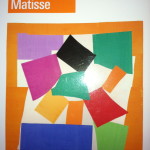
Wonderful, isn’t it? Our eyes love the contrasts; at least mine do. The white space can be just background, or with just a little effort, it can break itself up into a whole bunch of distinctive shapes worth paying attention to on their own.
Just coincidence perhaps, but when I came back from New York and taught my evening class at Southern New Hampshire University, I found a mesmerizing exhibit of sculptures by a Maine artist, called “Objects in Motion” that illustrated the same principle, more or less. Kim Bernard is interested in physics, and her works bring to mind molecules and large scale natural phenomena that rely on an interaction between elements, or what I might call the “here—not here” effect.
This one has a dizzying effect…
This one not so much.
To me, it’s not much of a stretch to take this whole idea and relate it to how we manage our calendars. One “something” coming relentlessly after another is not really the best recipe for living, or working, well. This has taken me about eons to learn, but I now see—without a shadow of a doubt—that most activities requiring follow-up, or just worth savoring, actually require extra time built in for the follow-up or the savoring. In terms of our professions, this plays out by preserving open spaces: to prepare for class, to take careful notes after a session, to make those calls. In our personal lives, too, a really good visit with a friend, say, can take a little tending in the soul even afterwards so that it keeps glowing brightly.
So what does this all have to do with Christmas? First of all, I bet I don’t need to convince any of you that it shouldn’t come round more than once a year. Secondly, if Advent is supposed to be a time to “un-clutter” ourselves (this is one of things I heard my husband say yesterday), then we’d better see to it we’re making some kind of productive contrasts between “stuff and not stuff” in our lives. There’s not one right way to do this, of course, and timetables vary. Maybe we even like the days leading up to Christmas to be “waiting, but with a certain frenzy” so that we can better enjoy the prospect of stillness in the days following. Whatever the balance might be for each of us, we’ll seek it, or else we’ll droop.
At this season, I never much liked a tree that wasn’t chock full of branches. Perhaps this year, our airy tower will set a new trend.
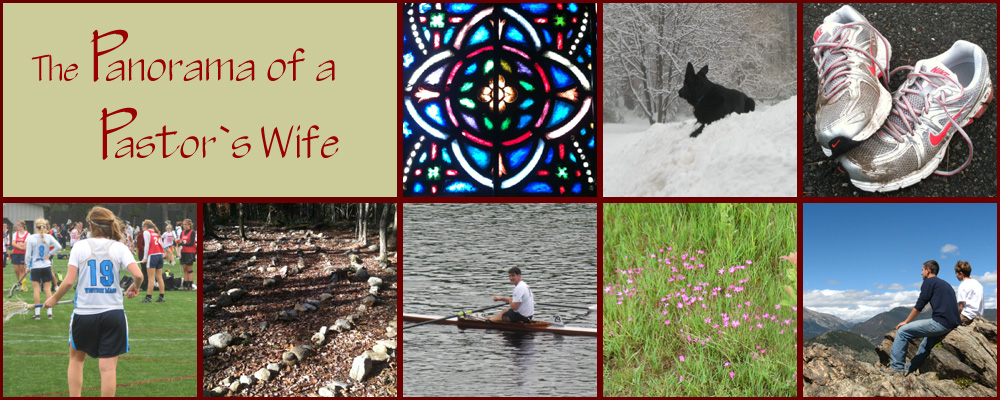
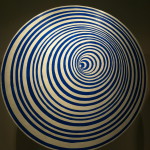
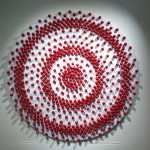
Nancy Lowry
Hi Polly – Kim Bernard’s website is wonderful. I hope she comes to a gallery near us!